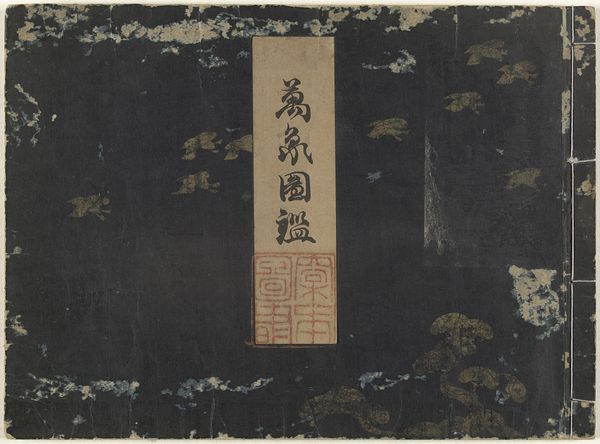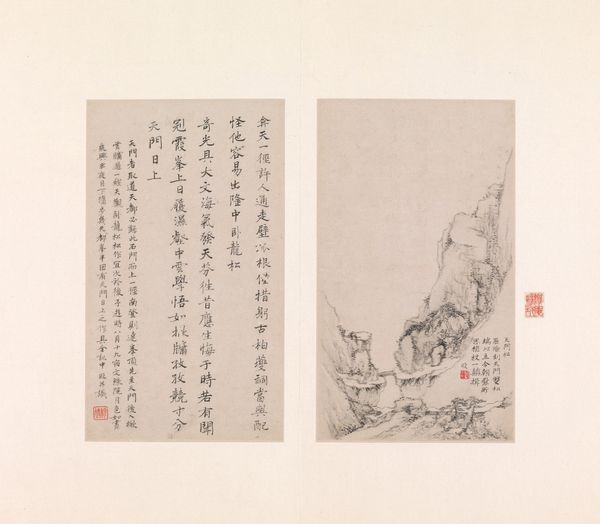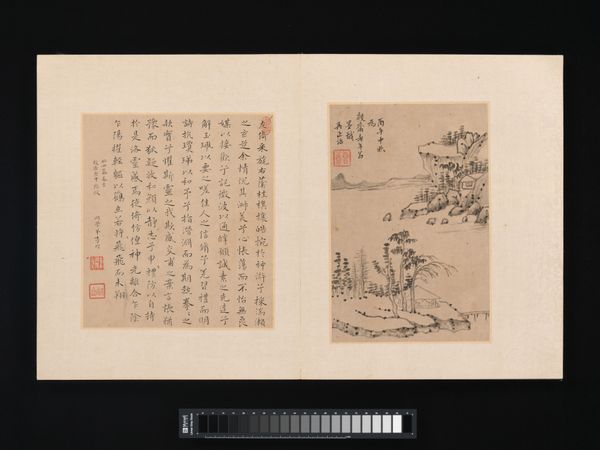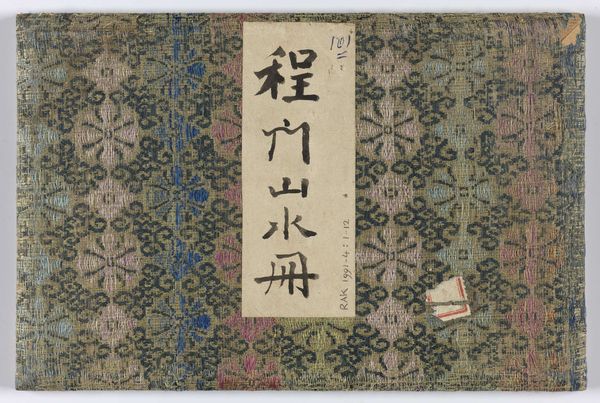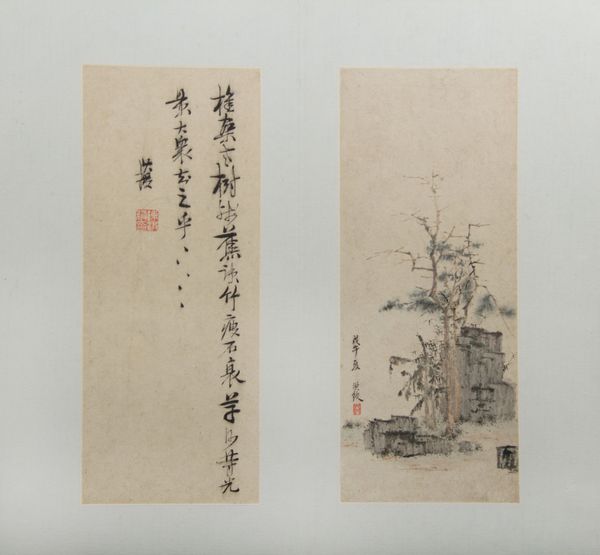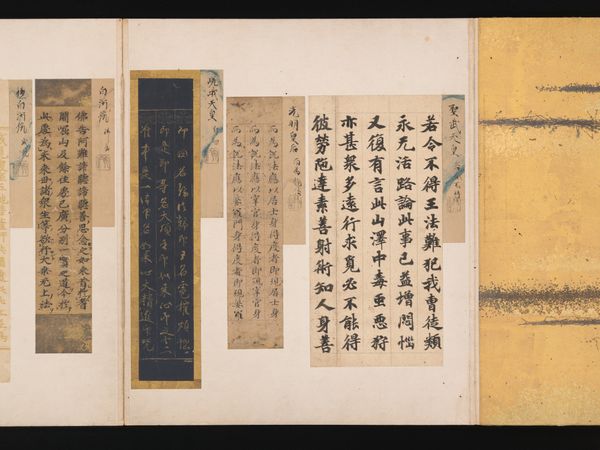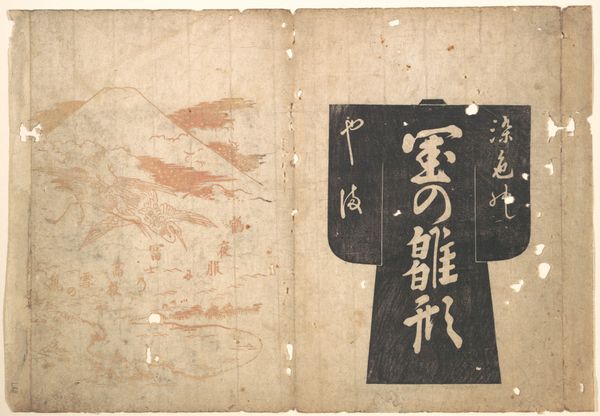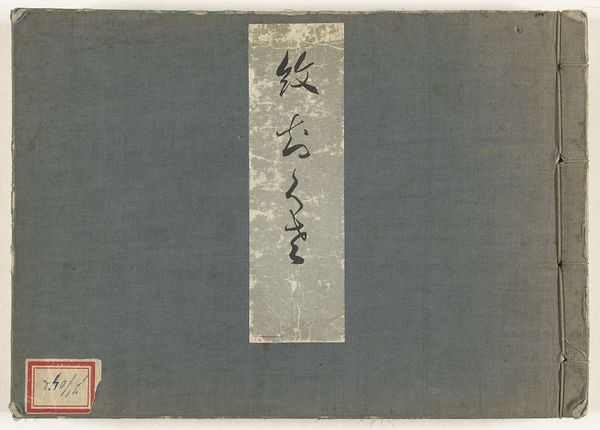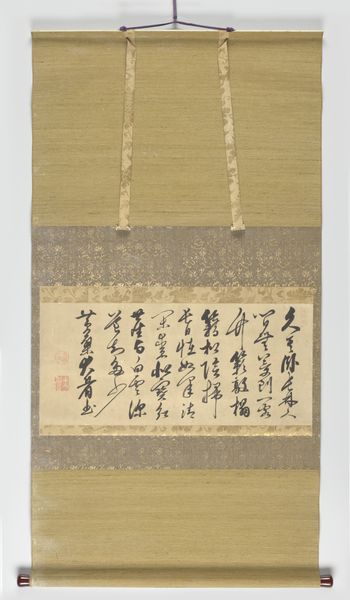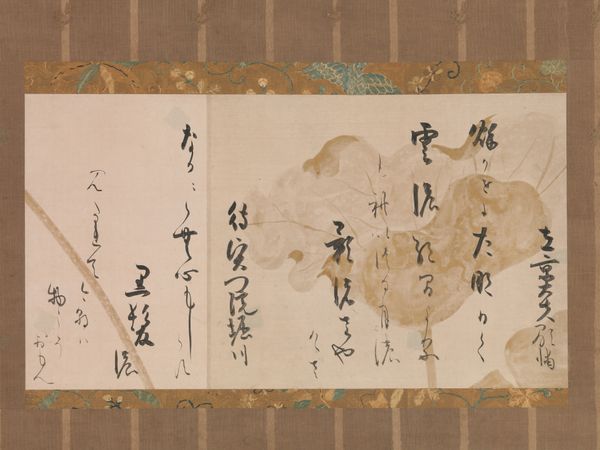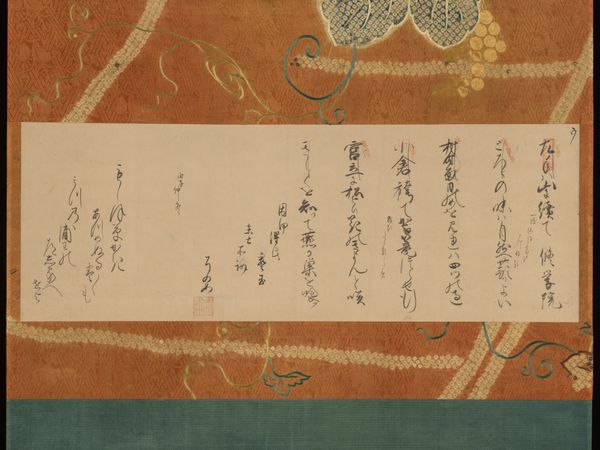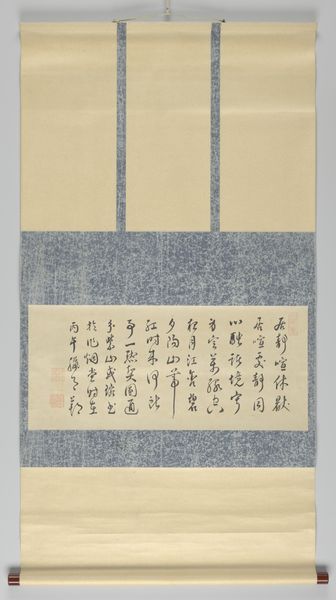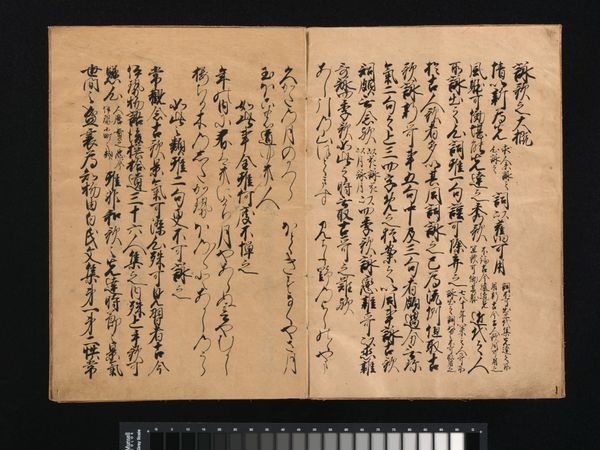
Eight Kinds of Jin and Tang Writings in Small Standard Script 17th century
0:00
0:00
drawing, paper, ink
#
drawing
#
asian-art
#
paper
#
ink
#
calligraphy
Dimensions: Each leaf maximum size: 9 7/8 x 3 13/16 in. (25.1 x 9.7 cm)
Copyright: Public Domain
Curator: Here we have a 17th-century drawing titled "Eight Kinds of Jin and Tang Writings in Small Standard Script," currently housed at The Metropolitan Museum of Art. It uses ink on paper and showcases calligraphy, a true testament to the beauty and complexity within Asian art. Editor: The texture and the somber color palette lend a very serious, almost austere mood, don't you think? There's a real weightiness here, both visually and conceptually. It strikes me as remarkably formal. Curator: Absolutely, the small standard script, often used in copying classics and official documents, imbues it with that formal quality. It visually reflects the rigorous process and tradition of Chinese calligraphy. Note the array of seals impressed into the paper. Each serves as a marker of ownership and attestation, building a history of the work's cultural capital and transmission. Editor: It is almost like witnessing an intersectional timeline—connecting history and tradition as something ever evolving. Each of those seals, a signifier, contributing not just ownership, but signifying the ongoing dialogue across centuries of knowledge and aesthetics. Do you think this work carries contemporary relevance, outside purely art historical importance? Curator: I believe it holds tremendous value beyond historical interest. It echoes the enduring fascination with ancient knowledge and aesthetics that pervades contemporary visual culture. Calligraphy, after all, functions as a visual language connecting generations and evoking a continuous flow of meaning. I feel like seeing that idea condensed within this format brings out how crucial and important its long-lived imagery is. Editor: I agree, this piece, while anchored in history, promotes conversations regarding identity, cultural ownership, and legacies embedded within aesthetic and historical contexts. It pushes one to consider how legacies interact with contemporary existence. Curator: It also evokes something about the sheer passage of time and our connection to artistic and intellectual predecessors. Editor: A poignant reminder that history shapes and is shaped by us continuously.
Comments
No comments
Be the first to comment and join the conversation on the ultimate creative platform.
